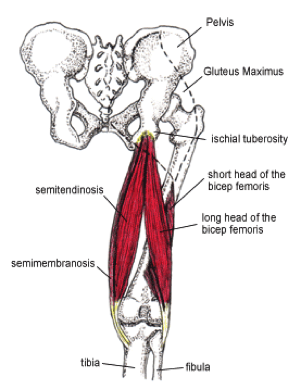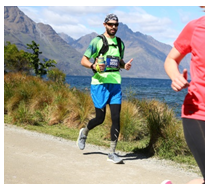The hamstrings are a collective term used for the group of muscles that sit at the back of your upper leg. They include the:
The Primary functions of the hamstrings are to extend the hip – move the leg backwards and flex the knee – take your heel towards your bum. They are important in everyday life for walking around, to riding your bike to running down the road. The incidence of injury is related to non-modifiable and modifiable risk factors, with previous hamstring injury having a >30% recurrence rate.
Non Modifiable risk factors include:
- Age > 23 year of age
- Previous hamstring injury (34% recurrence)
- Spinal changes to load
Modifiable risk factors include:
- Hamstring weakness
- Lack of flexibility
- Fatigue and muscular imbalance of muscle of the lower limb
- Excessive pelvic tilting
- Core muscle weakness and reduced endurance
- Adverse neural tension
The two main ways the hamstring muscle gets injured is:
- Closed chain – When the foot is in contact with the ground and you lunge forward
- Example – Lunging in squash
- These injuries are normally higher up the back of the thigh and usually take longer to get full rehabilitation
- Open chain – with the shin and foot is moving and not in contact with the ground
- Running, dancing or kicking movements
- In running, one of the main roles of the hamstrings is to slow the shin down as you prepare for foot contact with the ground. This is called eccentric control and means that as the muscle contracts to slow the movement it also lengthens at the same time. This requires a lot of control and unless trained specifically for this, injury may ensue.
- Usually lower down the back of the thigh (not always) and usually a quicker rehabilitation occurs
- Early establishment of goals and time frames
- Pain & swelling management
- Facilitate tissue healing
- Restore normal muscle length, neural movement and walking patterns
- Regain strength
- Retrain the bodies awareness of where it is in space (what your brain thinks it is doing)
- Running retraining and sport specific rehab
Rehab the mind as well as the body!
- Use imagery early on
- Make use of goal setting
- Fear avoidance (of re injury) retraining
- Reducing Catastrophizing of re injury
If you currently have tightness or pain in your hamstring, or have had an injury in the past, it pays to focus on this and get it sorted early on so that further recurrence doesn’t limit your goals in the future! 🙂
Until next time,
Joel
Physiotherapist & Exercise Scientist
Certified Professional with “The Running Clinic”



